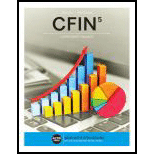
Concept explainers
Scenario Analysis is a technique used to identify the project’s risk and compare the bad and good circumstances with the base case scenario. It considers both the 1) sensitivity of the project’s
To carry out the scenario analysis, it is required to calculate the NPV of worst case, best case and base case, followed by the calculation of its standard deviation and co-efficient of variation. If the co-efficient of variation is higher than the average project of the company, the project should be rejected.
Expected NPV, Standard deviation of NPVs and co-efficient of variation of NPVs are calculated as below:
Here,
Probabilities of the occurrence is “
NPV for each probability is “
Standard deviation of NPVs is “
Co-efficient of Variation of NPVs is “
After conducting a scenario analysis, it is estimated, that the NPV of the project for all the three scenarios is as follows. Determine whether the project should be accepted or rejected if the maximum allowable co-efficient of variation is 0.7.
| Scenario | Probability | NPV |
| Best Case | 25% | $185,400 |
| Base Case | 60% | $128,300 |
| Worst Case | 15% | -$77,600 |
Want to see the full answer?
Check out a sample textbook solution
Chapter 10 Solutions
CFIN (with Online, 1 term (6 months) Printed Access Card) (New, Engaging Titles from 4LTR Press)
- Take value of 1.01^-36=0.699 . step by steparrow_forwardsolve this question.Pat and Chris have identical interest-bearing bank accounts that pay them $15 interest per year. Pat leaves the $15 in the account each year, while Chris takes the $15 home to a jar and never spends any of it. After five years, who has more money?arrow_forwardWhat is corporate finance? explain all thingsarrow_forward

 Financial Reporting, Financial Statement Analysis...FinanceISBN:9781285190907Author:James M. Wahlen, Stephen P. Baginski, Mark BradshawPublisher:Cengage Learning
Financial Reporting, Financial Statement Analysis...FinanceISBN:9781285190907Author:James M. Wahlen, Stephen P. Baginski, Mark BradshawPublisher:Cengage Learning

